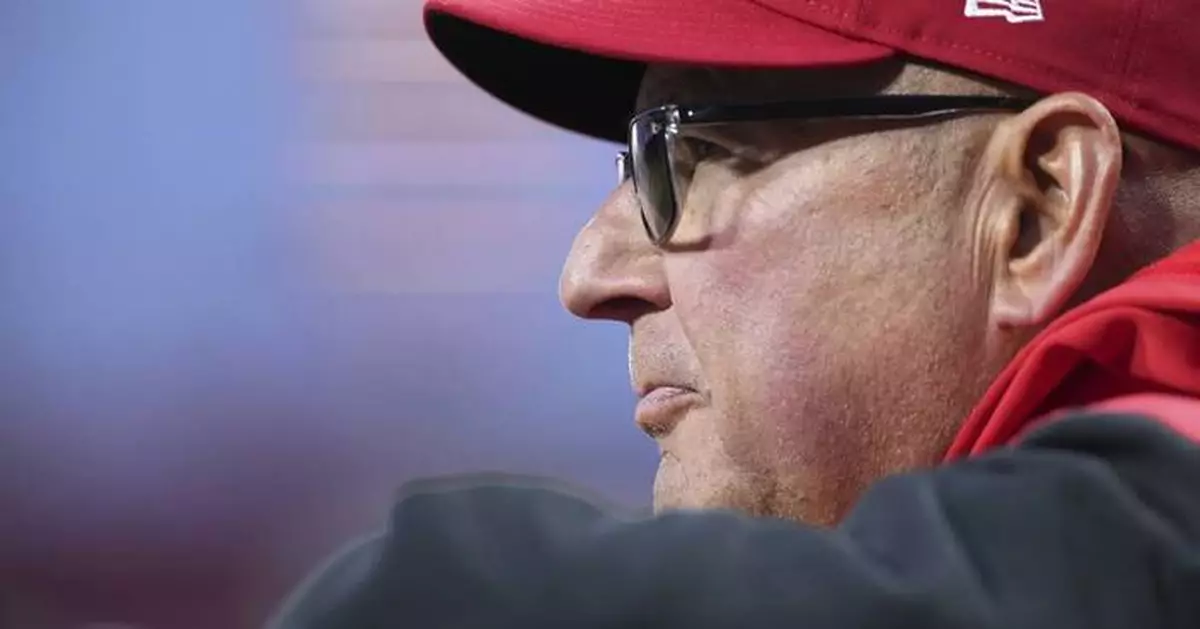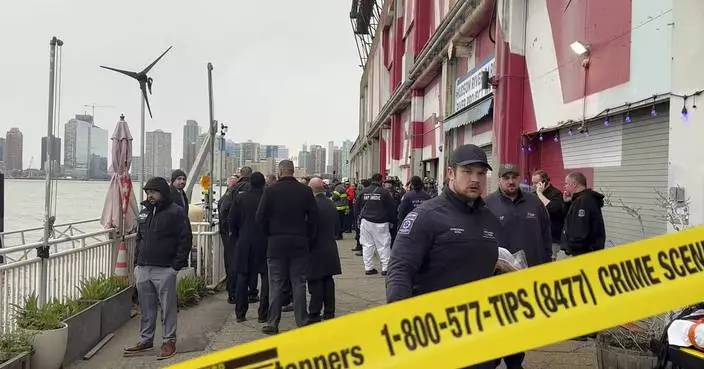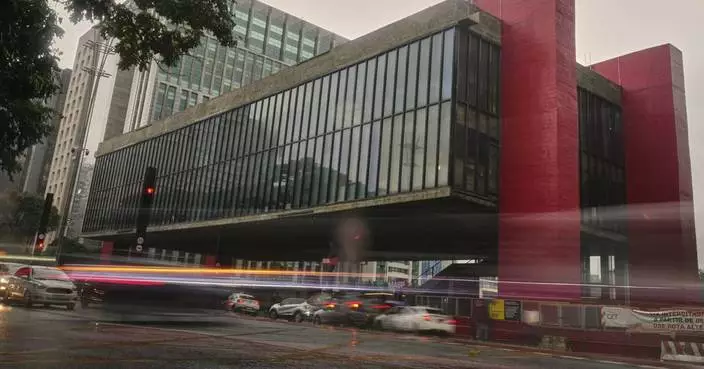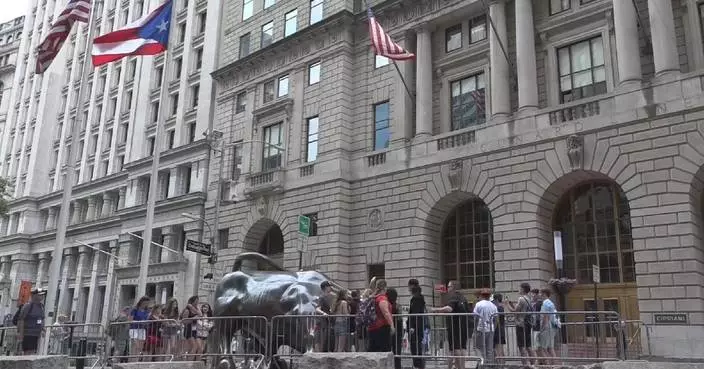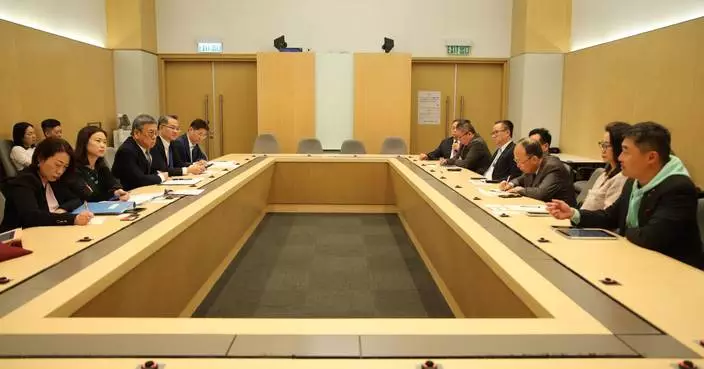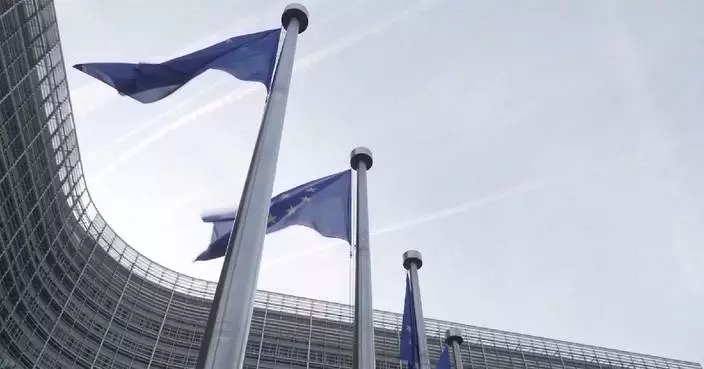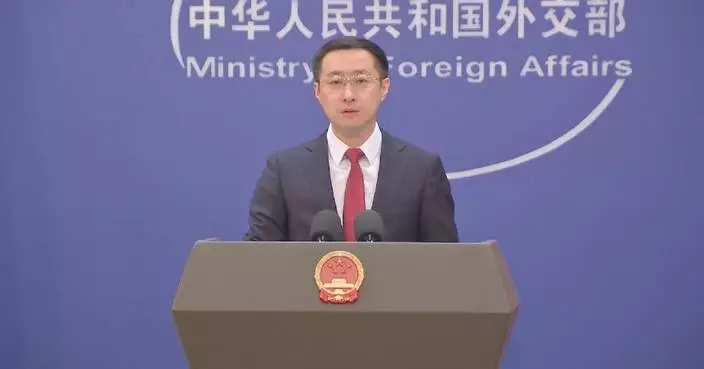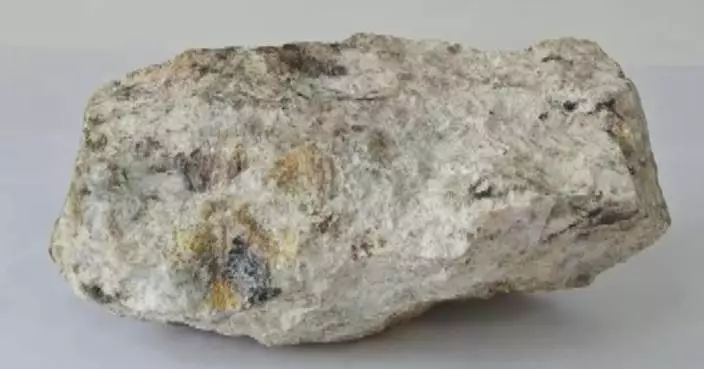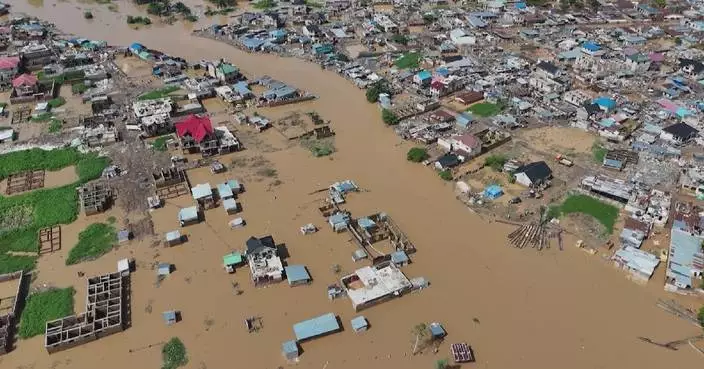MILWAUKEE (AP) — Cincinnati Reds manager Terry Francona was back at American Family Field on Saturday after missing the previous game due to what he jokingly described as “intestinal turmoil.”
Francona wasn't quite at full strength, but he felt grateful to be back in uniform.
“I don’t think I’ve been 100% since 1988,” Francona said before the Reds snapped a four-game skid with an 11-7 victory over the Milwaukee Brewers. “I feel good enough to be here. It’s not a good feeling, not being here.”
The stomach issues had left the Reds without Francona, first-base coach Collin Cowgill and a number of players Friday when Cincinnati fell 3-2 to the Brewers. Bench coach Freddie Benavides filled in as manager after Francona stayed back at the team hotel.
While the Reds hadn’t said exactly which players were unavailable for Friday’s game, Francona identified one Saturday by saying that reserve outfielder Jacob Hurtubise probably was feeling the worst of anyone.
“Everybody’s here,” Francona said. “I think we’ve got some guys that probably feel like they got hit by a truck a little bit, kind of like I did, but we’re OK.”
Although the Reds weren't missing any players due to illness on Saturday, Matt McLain was scratched from the starting lineup about 45 minutes before the first pitch due to tightness in his left hamstring.
“We might not play him tomorrow just to be probably a little bit like a worrywart,” Francona said after Saturday's game. “I want him to be able to play and not try to have to go 85 or 90%. I don't think that's fair to him. He's willing to do it. I don't think that's right. So we might stay away from him tomorrow again. We'll see.”
Francona was happy to watch a game in person after having all kinds of trouble tuning in to the action Friday. Francona listened to a radio broadcast and got frustrated that the audio was so far behind the play-by-play action on apps.
“I listened on my phone and followed along because that was the only way I could get it,” Francona said. “I thought I had the baseball package on my phone, but it wasn’t letting me do it. I did the best I could.”
He probably didn’t like what he heard for much of the night.
The Reds went hitless for the first 6 2/3 innings but ended a 35-inning scoreless streak by getting two runs in the eighth. Cincinnati’s scoreless streak was its longest since 1946, when the Reds failed to produce a run for 37 consecutive innings.
AP MLB: https://apnews.com/hub/mlb
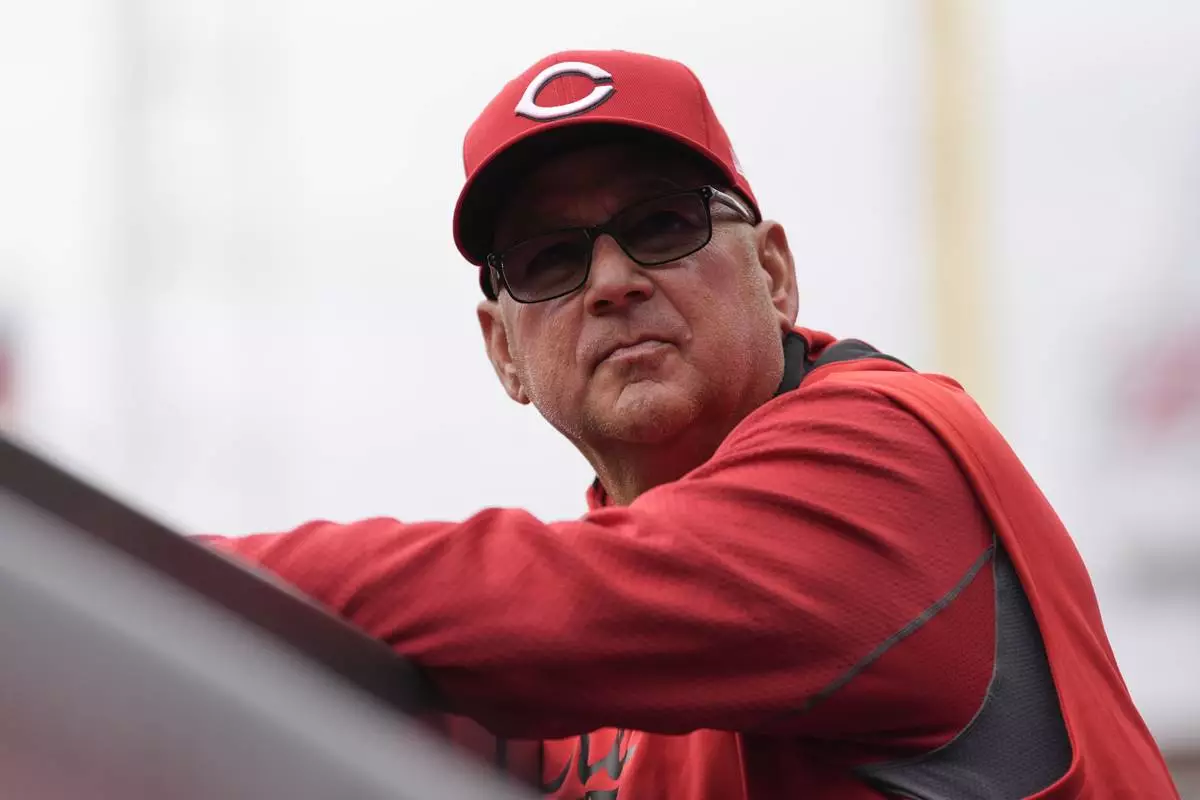
Cincinnati Reds manager Terry Francona looks out from the dugout before a baseball game against the San Francisco Giants, Sunday, March 30, 2025, in Cincinnati. (AP Photo/Carolyn Kaster)
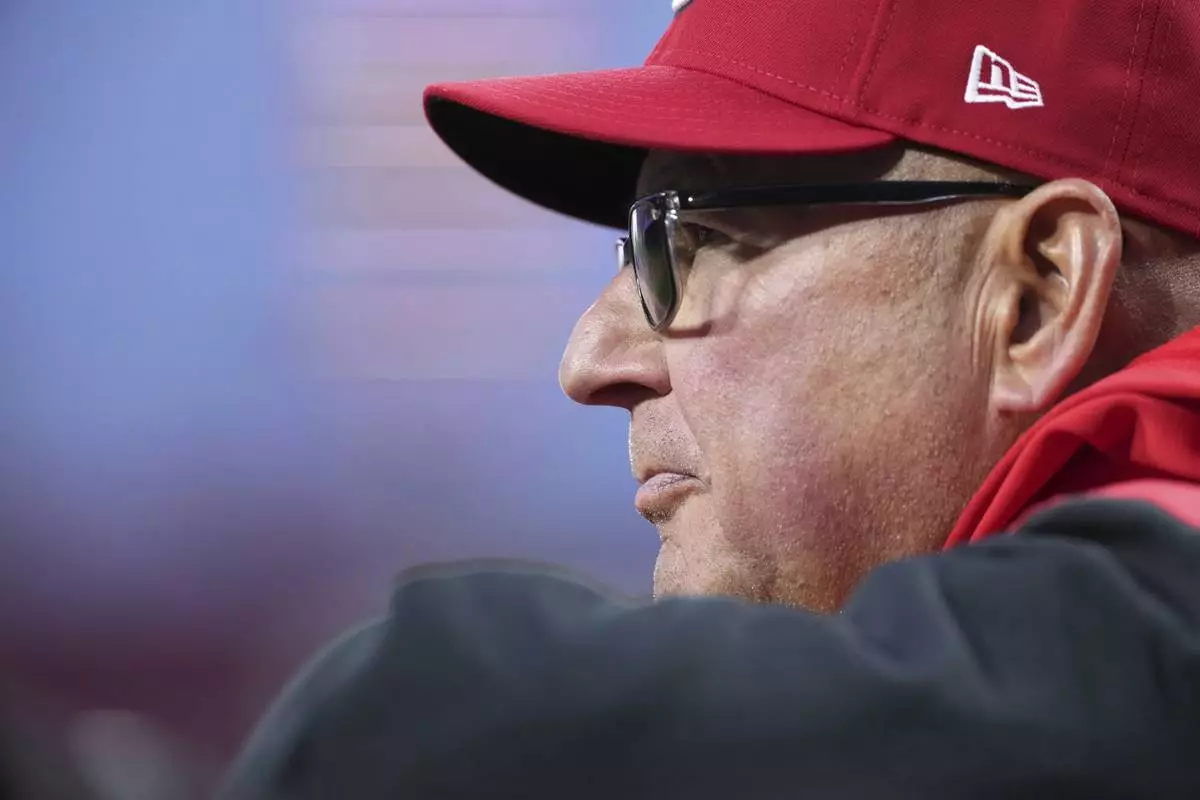
Cincinnati Reds manager Terry Francona watches play in the fourth inning of a baseball game against the Texas Rangers, Monday, March 31, 2025, in Cincinnati. (AP Photo/Kareem Elgazzar)
BAD SCHANDAU, Germany (AP) — Germany's reputation for efficiency is taking a hit from crumbling concrete. Cracks and collapses are also a risk to its economy, Europe's biggest.
The European Union's most populous member is trying to turn around a problem with worn-out infrastructure — including about 4,000 bridges that need modernizing or replacing over the next decade. All too frequently, unexpected scares about the state of bridges cause short-notice closures that bring local gridlock. Occasionally, it is worse than that.
In Dresden, a bridge dating back to 1971 partially collapsed in the middle of the night in September due to corrosion. No one was hurt, but the collapse snarled traffic and temporarily blocked shipping on the Elbe River. The remains of the Carola bridge have yet to be removed.
The collapse prompted checks on similarly designed bridges — including one in Bad Schandau, a small town further up the Elbe near the Czech border. It was shut abruptly to all traffic in November as a precaution, leaving locals with a 20-kilometer (12 1/2-mile) trip to the nearest road crossing until it reopened on Thursday — albeit with a 7.5-ton weight limit.
“The closure of this bridge was an absolute catastrophe for people in Bad Schandau,” said Steffen Marx, a civil engineering professor who led ultimately successful stress tests on the bridge. “It's the classic gridlock ... this is the only crossing along nearly 50 kilometers (30 miles) of river.”
Even as the situation eases in Bad Schandau, Berliners are steaming over the abrupt closure last month of a bridge on a busy highway after a widening crack was detected. It will now be demolished quickly. The outage snarled traffic in a large section of the capital, forced the weeks-long closure of a commuter railway line and prompted the government to cough up 150 million euros ($164 million) for its urgent rebuilding.
“The Germans are very good engineers. You would think that everything works,” said Monika Schnitzer, the head of an independent panel of economic advisers to the government. “At the same time, the Germans are also very good at saving — and they saved for a very long time particularly on this infrastructure, on bridges.”
Germany's prospective new government has moved to address the issue before it even takes office. Last month, the would-be coalition under conservative leader Friedrich Merz pushed through parliament a 500 billion-euro ($551 billion) fund, financed by borrowing, to pour money into creaking infrastructure over the next 12 years. Politicians see that as part of efforts to restore the stagnant economy to growth.
It's not just bridges: There are also decrepit schools, and a national railway has begun thorough but disruptive overhauls of major routes after years of underinvestment. Complaints about frequent delays and breakdowns on the railway have become a national sport.
The coalition agreement presented Wednesday states that “functioning infrastructure is the foundation for our country's prosperity, social cohesion and sustainability. So Germany needs an infrastructure booster — that applies to hospitals and schools as well as bridges and railways.”
On the roads, it promises that money will be provided “to resolve the renovation backlog on bridges and tunnels in particular.”
The outgoing government says a large number of bridges were already modernized under a program under way since 2022. But much remains to be done.
“Now that there's money, a growth spurt could actually be generated very quickly,” Schnitzer said. “But what is really necessary for this is that the money is spent quickly. And for that, we need much faster planning and approval procedures than we had so far.”
She noted that Germany has proven it can speed up its planning bureaucracy, notably in building its first liquefied natural gas terminals within months after Russia launched its full-scale invasion of Ukraine in 2022 and subsequently cut off pipeline gas supplies to Germany.
Outgoing government spokesperson Steffen Hebestreit pointed this week to the availability of construction companies and machines as a hurdle to quick bridge repairs and said Germany is “at its capacity limit.”
Marx said the situation of Germany's infrastructure is “quite critical.”
“It isn’t so much because we don’t invest enough — that’s one reason,” he said. “But from my point of view, the main reason is that we don’t take enough care of things. That we just don’t maintain infrastructure and we do far too little cleaning, repairing, strengthening, all things we do in our private buildings.”
He added that the huge new infrastructure fund is necessary, but he's concerned the money will be put only into demolishing and rebuilding the worst bridges rather than ensuring that others never get into that state.
“You can't win political points with maintenance and preservation — it's boring and not really spectacular,” Marx said. “But it becomes spectacular when you neglect it.”
Geir Moulson in Berlin contributed to this report.
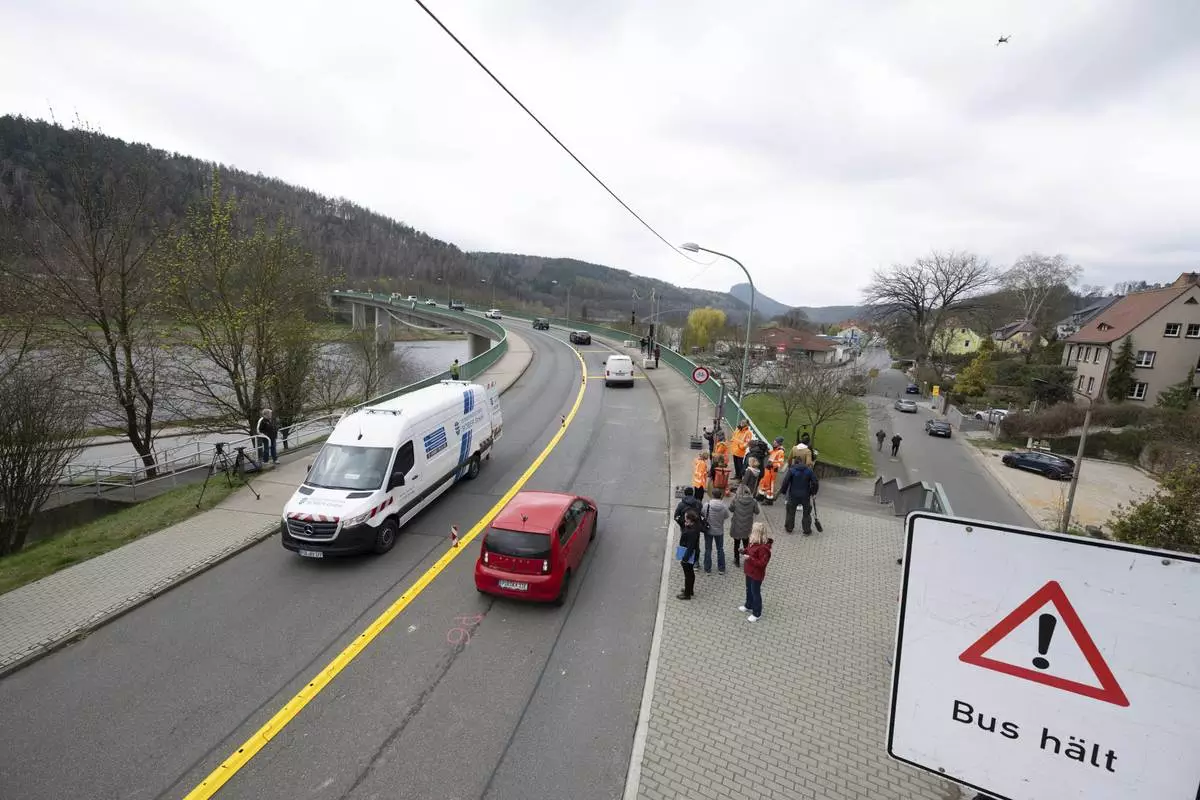
Passers-by and cars cross the Elbe bridge in Bad Schandau to mark the opening to traffic, in Dresden, Germany, Thursday April 10, 2025. (Sebastian Kahnert/dpa via AP)
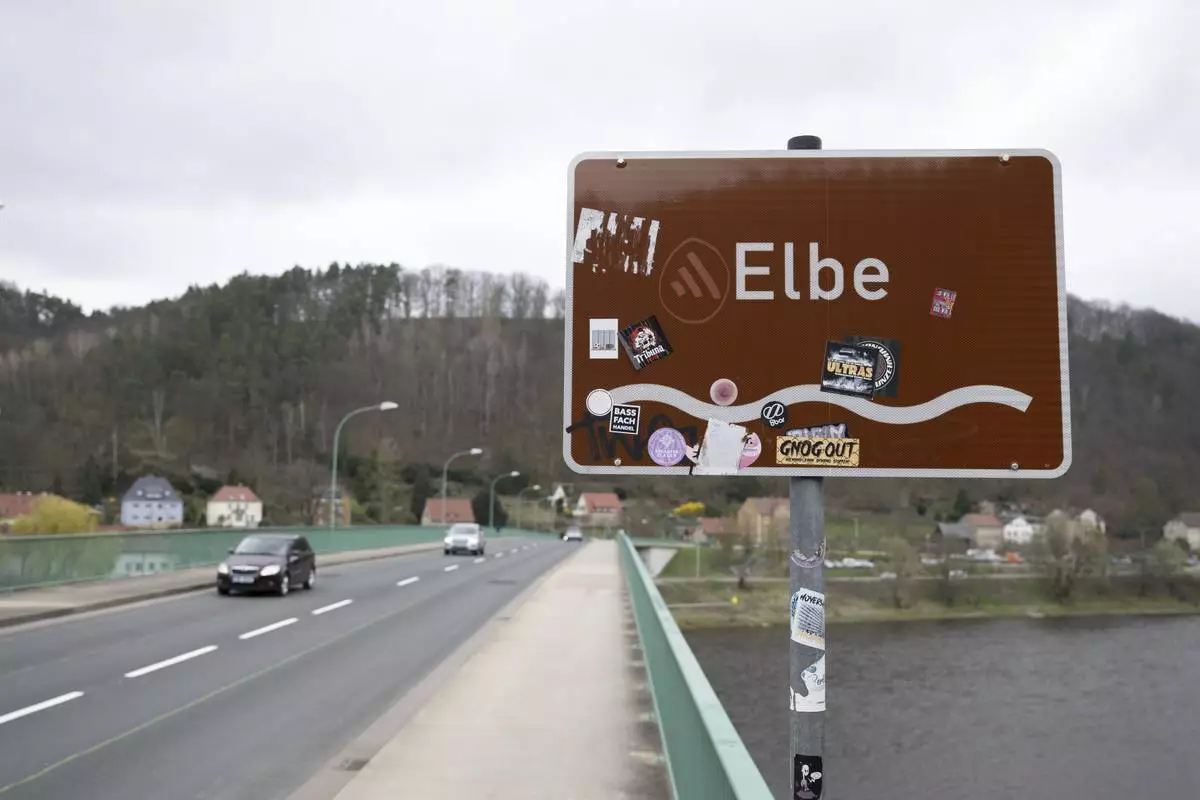
Cars cross the Elbe bridge in Bad Schandau to mark the opening to traffic, in Dresden, Germany, Thursday April 10, 2025. (Sebastian Kahnert/dpa via AP)
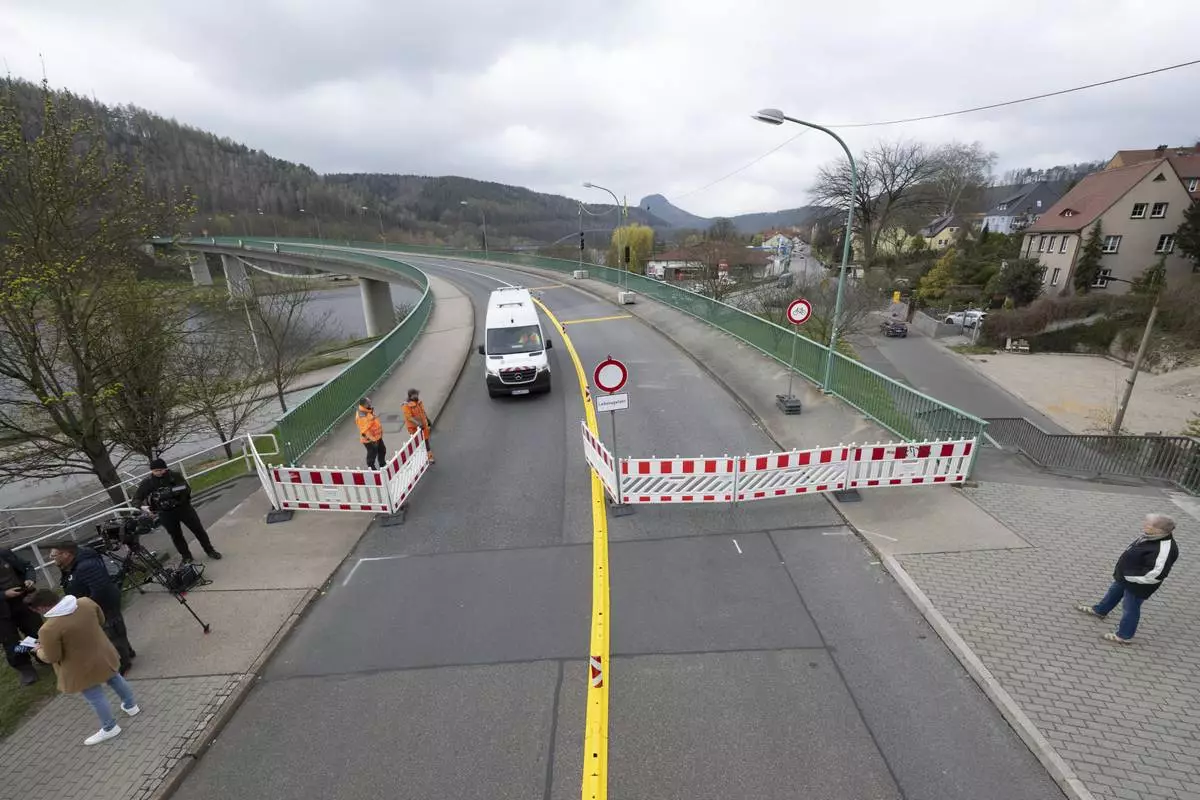
A traffic engineering vehicle crosses the Elbe bridge in Bad Schandau to mark the opening to traffic, in Dresden, Germany, Thursday April 10, 2025. (Sebastian Kahnert/dpa via AP)
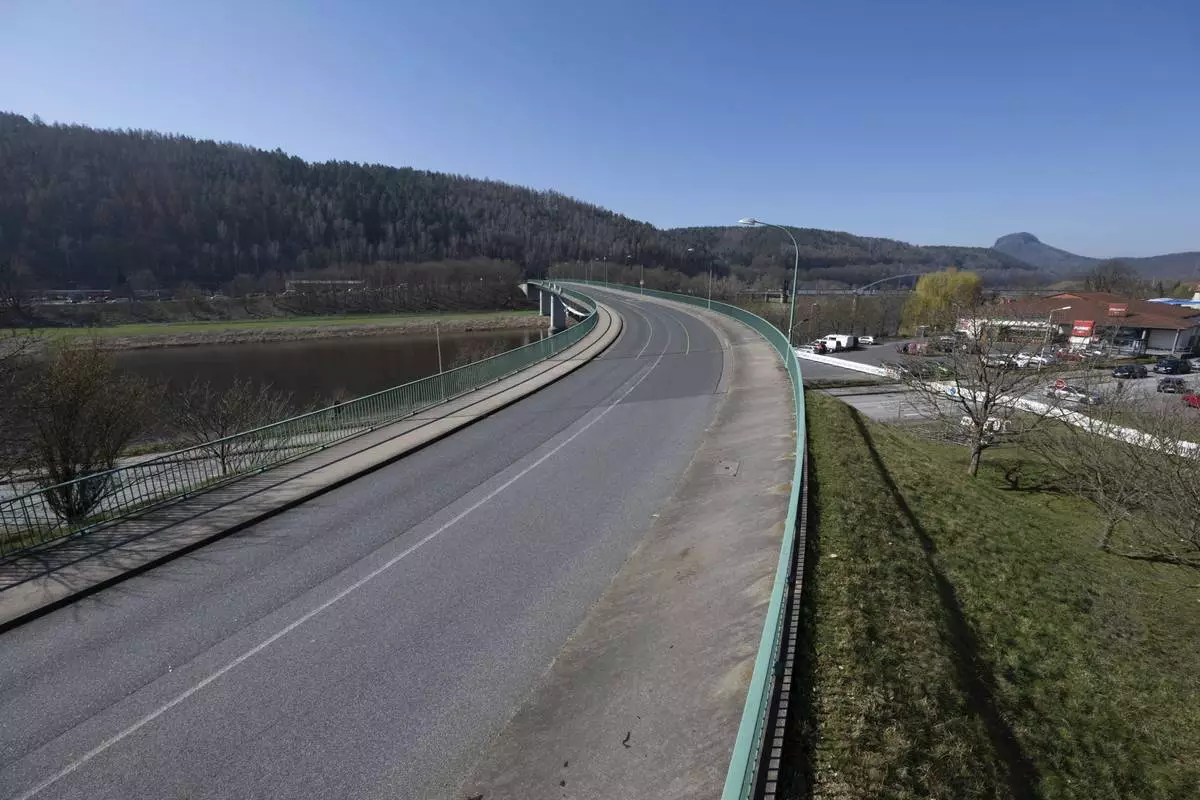
Cars parked next to the closed Elbe bridge a few days before its inauguration, in Bad Schandau, Germany, Friday March 28, 2025. (Sebastian Kahnert/dpa via AP)
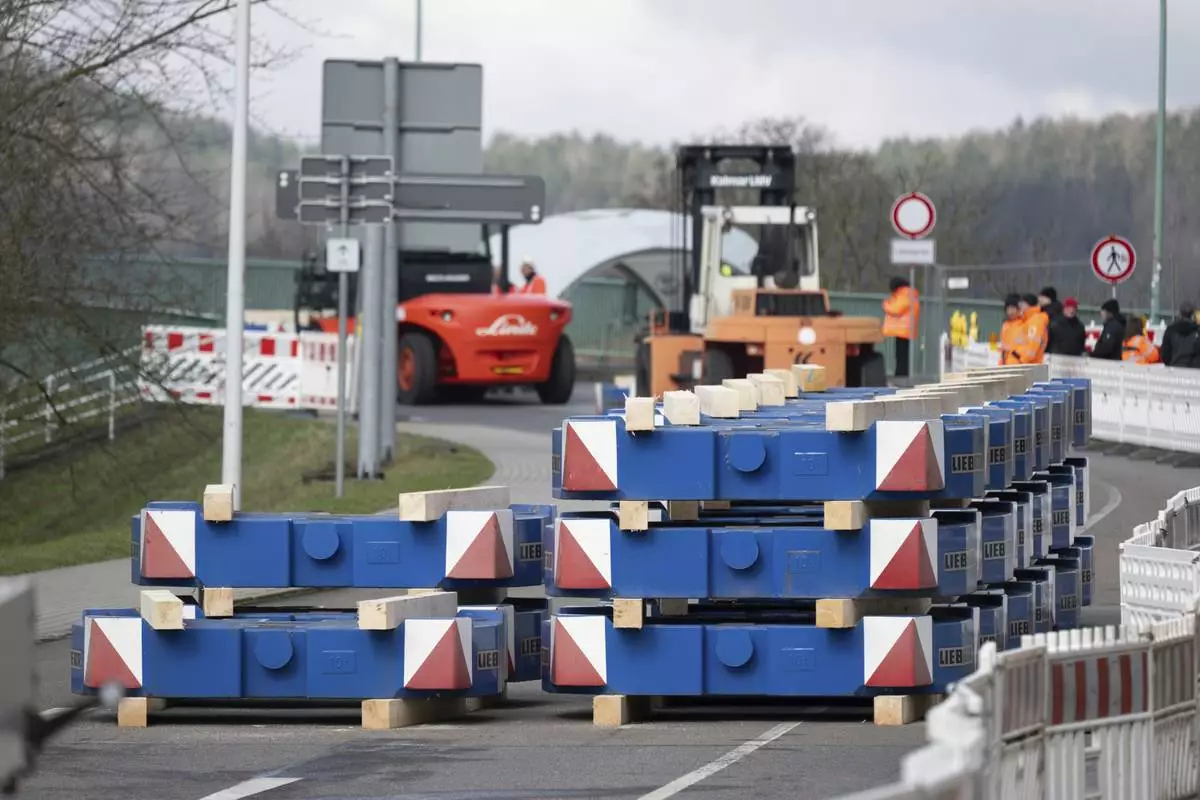
Weights are placed at the foot of the closed Elbe bridge as part of a load test, during a the three-day load test intended to show that the Elbe crossing can be reopened to traffic, in Bad Schandau, Germany, Tuesday April 1, 2025. (Sebastian Kahnert/dpa via AP)
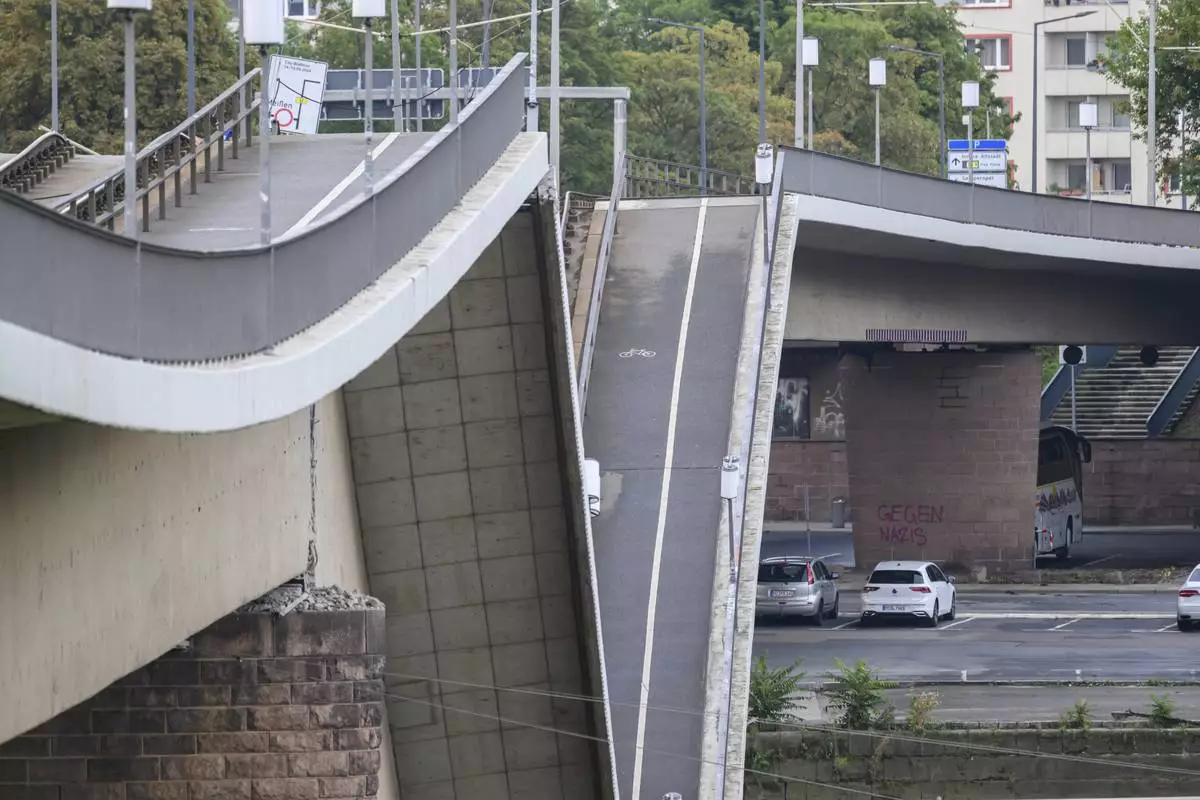
FILE - Parts of the Carola Bridge over the Elbe is seen collapsed in Dresden, eastern Germany, Wednesday, Sept. 11, 2024. (Robert Michael/dpa via AP, File)
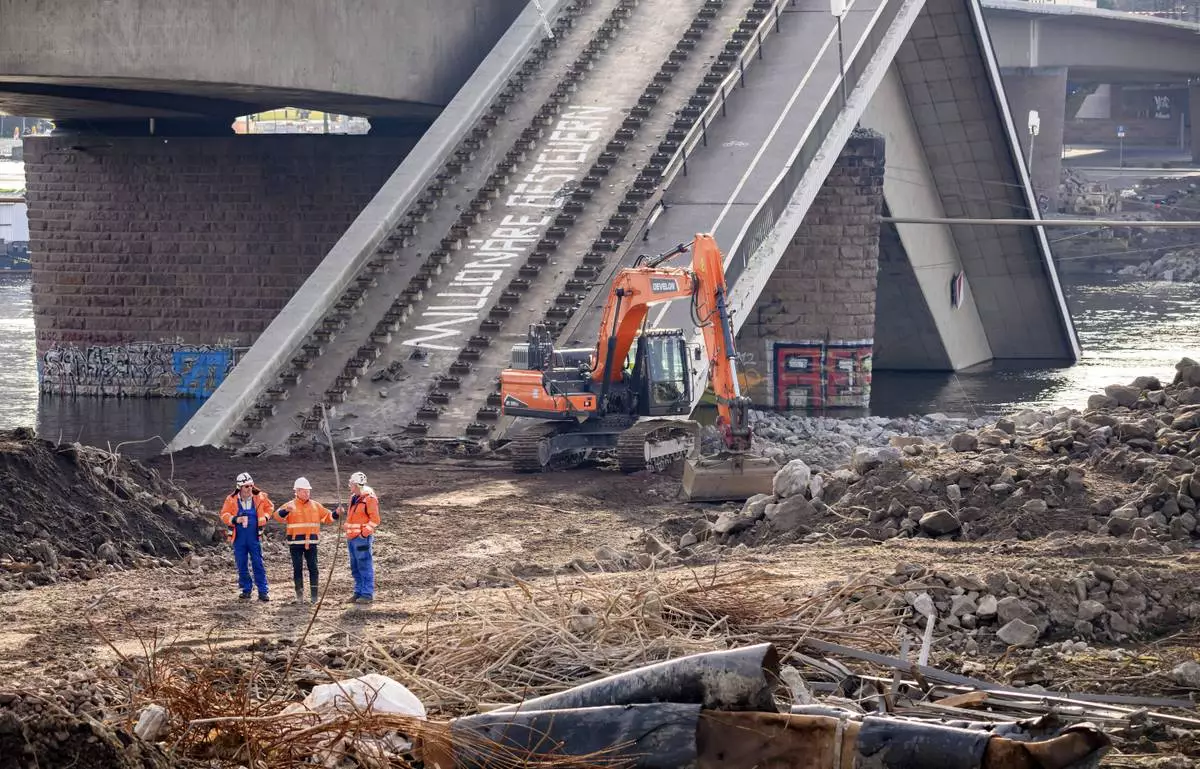
FILE - Experts stand in front of an excavator on the partially collapsed Carola Bridge on the Neustadt side during works, in Dresden, Germany, Thursday Jan. 30, 2025. (Robert Michael/dpa via AP, File)
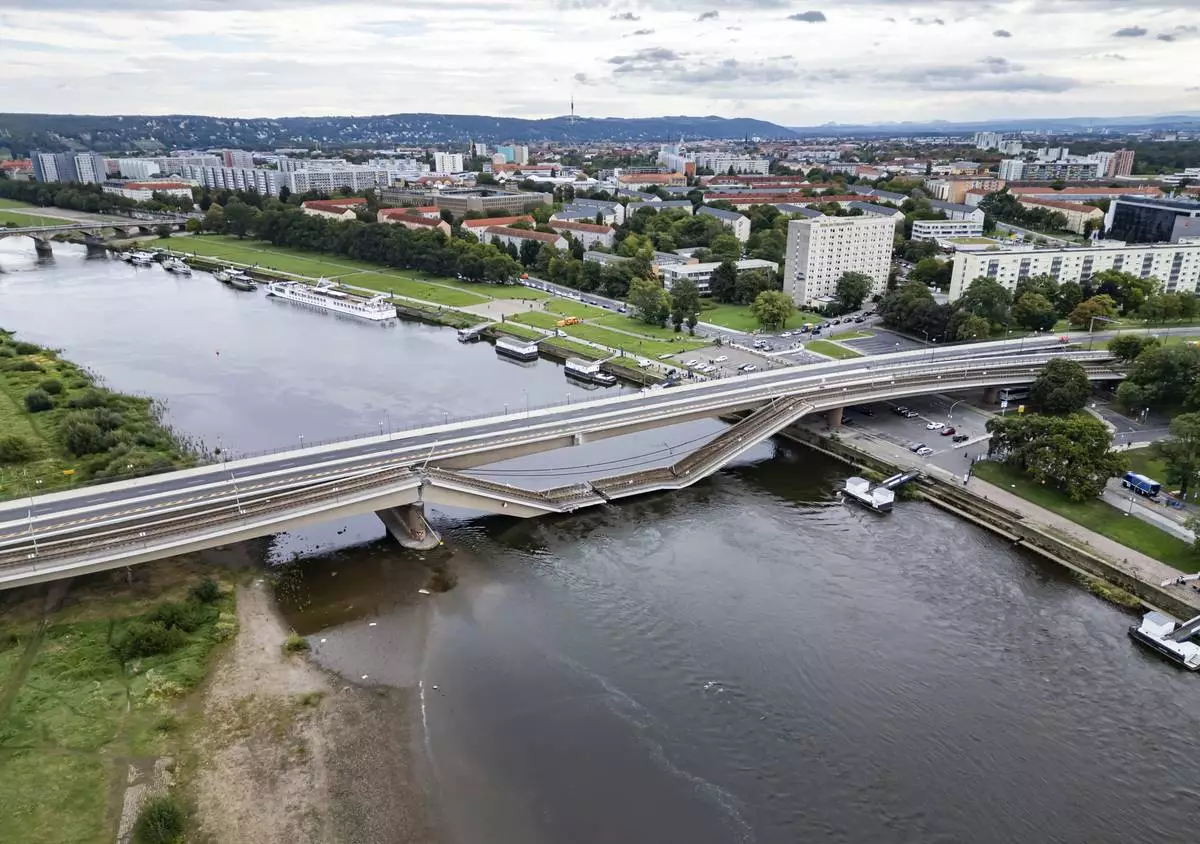
FILE - Parts of the Carola Bridge over the Elbe have collapsed in Dresden, Germany, Wednesday, Sept. 11, 2024. (Robert Michael/dpa via AP, File)
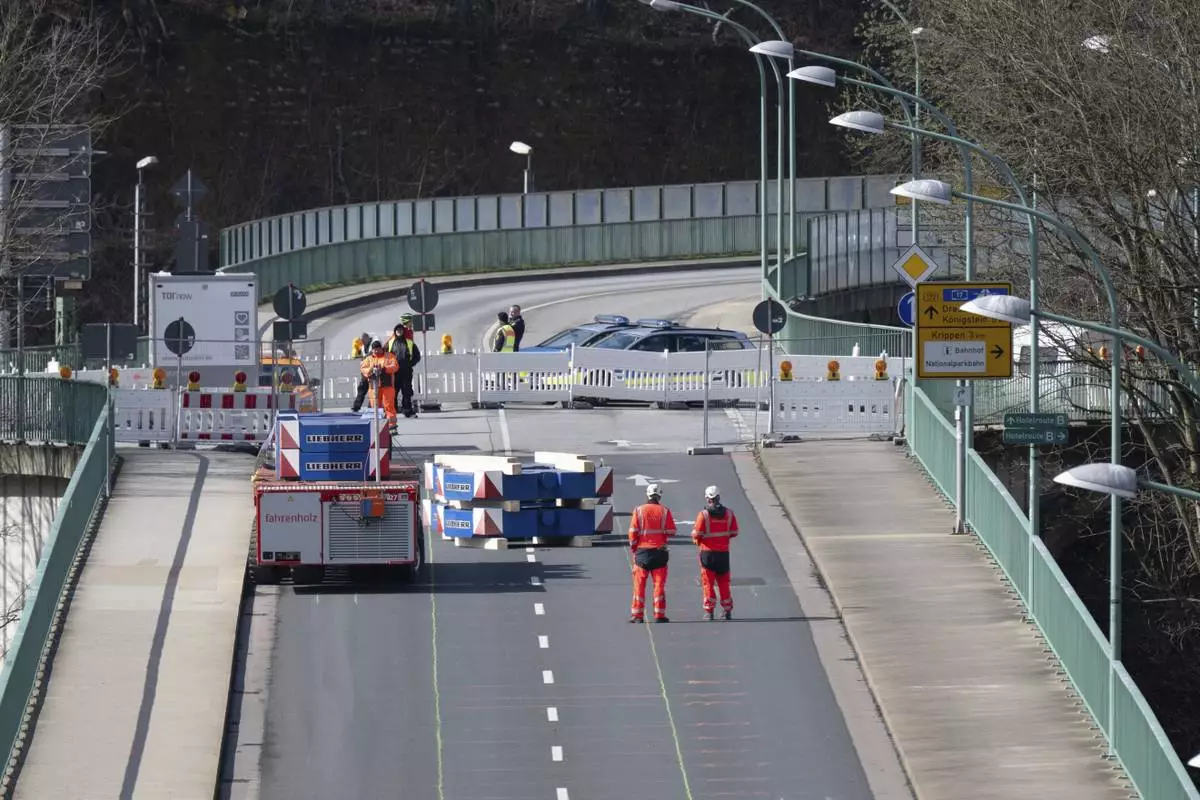
A heavy-duty module loaded with weights drives over the closed Elbe bridge as part of a three-day load test intended to show that the Elbe crossing can be reopened to traffic, in Bad Schandau, Germany, Tuesday April 1, 2025. (Sebastian Kahnert/dpa via AP)




